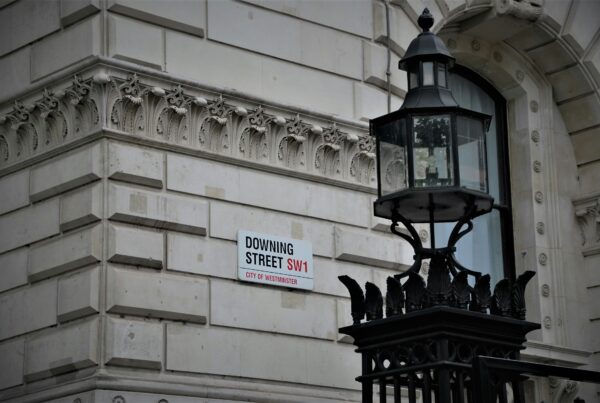Bright Blue, the independent think tank for liberal conservatism, has today published a report, Distant neighbours? Understanding and measuring social integration in England, which proposes and studies a new measure of social integration based on levels of neighbourhood trust in ethnically diverse areas.
The report is based on independent statistical analysis of the 2009-10 and 2010-11 Citizenship Survey, the 2011 Census and the 2015 Indices of Deprivation, as well as further analysis of the Index of Dissimilarity and the Index of Ethnic Diversity.
This report is unique in three key ways. First, the report predicts levels of neighbourhood trust for every local authority (LA) in England. Second, the report identifies the individual-level and local-level factors which explain why neighbourhood trust levels vary across England. Finally, it identifies the most socially integrated local authorities of England, drawing on our proposed new measure of social integration.
The results show significant variation in predicted levels of neighbourhood trust among LAs across England. The results show the proportion of individuals that are predicted to trust most of their neighbours in each LA. The top ten local authorities with the lowest levels of neighbourhood trust in England are all in London.
| Lowest neighbourhood trust | Highest neighbourhood trust | ||
| LA | Trust | LA | Trust |
| 1. Haringey | 12.6% | 1. Uttlesford | 82.4% |
| 2. Greenwich | 14.4% | 2. Mid Suffolk | 81.9% |
| 3. Newham | 14.6% | 3. North Dorset | 81.1% |
| 4. Southwark | 14.6% | 4. Suffolk Coastal | 81.0% |
| 5. Waltham Forest | 14.6% | 5. Horsham | 80.3% |
| 6. Barking and Dagenham | 14.7% | 6. Cotswold | 79.9% |
| 7. Westminster | 15.6% | 7. North Devon | 77.9% |
| 8. Hackney | 16.9% | 8. South Cambridgeshire | 77.9% |
| 9. Islington | 17.1% | 9. Waverley | 77.8% |
| 10. Hillingdon | 18.0% | 10. West Oxfordshire | 77.6% |
The individual-level results from the independent statistical analysis showed seven main findings:
- Women are less likely to trust most of their neighbours compared to men. 37% of women across England are predicted to trust most of their neighbours compared to a predicted 42% of men.
- The likelihood of trusting most of your neighbours increases as people become older. The proportion of people predicted to trust most of their neighbours is lowest at the age of 22: 22% across England. This proportion doubles by the time people reach the age of 48, with 44% predicted to trust most of their neighbours. A similarly sized increase happens by the age of 83, with 66% predicted to trust the majority of their neighbours.
- Individuals from different ethnic minority groups across England are much less likely to express trust in most of their neighbours when compared to white individuals. White individuals have a notably higher predicted probability of 53% to trust most of their neighbours. It is black individuals who are predicted to be the ethnic group that is least likely to trust most of their neighbours, with 18% predicted to trust most of their neighbours.
- Those with higher socioeconomic status have a significantly higher likelihood of trusting the majority of their neighbours. Those in management positions are much more likely to have higher levels of predicted neighbourhood trust, with 52% predicted to trust most of their neighbours across England, while those who have never worked or are long-term unemployed are the least likely, with only 25% of them predicted to trust most of their neighbours across England.
- Higher individual income is associated with increases in neighbourhood trust. Individuals who do not have any individual income are predicted to trust most of their neighbours only 27% of the time, whilst those who earn more than £100,000 annually are predicted to trust most of their neighbours at the rate of 65% across England.
The local-level results from the independent statistical analysis show six key findings:
- In areas with a greater proportion of married households with children, levels of neighbourhood trust are predicted to be higher.
- Individuals living in areas with higher levels of deprivation in terms of income are less likely to be predicted to trust most of their neighbours.
- Individuals living in areas with higher levels of deprivation in terms of crime are also less likely to be predicted to trust most of their neighbours.
- Levels of neighbourhood trust are higher in areas with a greater proportion of population being over 65 years old.
- Those living in rural areas are predicted to be more likely to trust most of their neighbours.
- People in areas with a greater than 5% decrease in White British population change in the ten years between 2001 and 2011 were less likely to be predicted to trust most of their neighbours.
- There is an association between high levels of ethnic diversity in a local area and lower levels of neighbourhood trust in England. Nevertheless, there are important nuances. Intriguingly, in local areas where more than 30% of migrants cannot speak English well, the analysis, in fact, finds that an increase in ethnic diversity is actually associated with a predicted increase in levels of neighbourhood trust. This might be due to frequent interactions that occur between ethnically homogenous groups, rather than between ethnically heterogeneous groups. An alternative potential explanation is that in ethnically diverse areas where a significant number of migrants do not have English proficiency, there might be lower barriers to interaction, as residents in those areas are more used to people from different backgrounds and those who cannot speak English well.
Bright Blue performed additional statistical analysis to identify the most socially integrated local authorities in England. Based on our proposed measure of social integration, this would be local authorities with relatively high levels of neighbourhood trust and relatively high levels of ethnic diversity. LAs were chosen by selecting those from the independent statistical analysis that were in the top two deciles of ethnic diversity alongside being in the top five deciles of predicted levels of neighbourhood trust. In other words, they were local authorities that were among the most ethnically diverse in England, but also had above average levels of neighbourhood trust.
There were four local authorities in England that met this criteria. They are the most socially integrated local authorities in England. They are:
- The City of London
- Cambridge
- Richmond upon Thames
- Milton Keynes
The four local authorities we have identified as being examples of high social integration also have low levels of residential segregation. All are in the bottom five deciles of dissimilarity, meaning that they are less residentially segregated than the average local authority. Thus, we are confident in our thesis that these local authorities are likely to be among the most socially integrated in England.
The report proposes nine original policy recommendations to boost social integration in England. These policies have two broad aims. First, to better equip individuals with the tools they need to integrate more, such as English for Speakers of Other Languages (ESOL) provision. Second, to reform institutions to enable people from different ethnic and religious backgrounds to better mix with one another, such as school linking.
Commenting Ryan Shorthouse, Director at Bright Blue and co-author of the report, says:
“Neighbourhood trust in ethnically diverse areas should be at the heart of our understanding and measurement of social integration. The UK government, as well as local and combined authorities and public bodies, should utilise this new measure in the context of assessing and funding any project or policy development that focuses on social integration.”
“The factors driving neighbourhood trust, and therefore social integration, are numerous and complex. There is no simple, straightforward solution to strengthen social integration. But politicians should focus on better supporting individuals, to give them the tools they need to integrate, and reforming public institutions such as schools, so they are better able to provide a platform for people from different ethnic and religious backgrounds to mix.”
“We have to recognise that it is people, not policies, that will improve social integration. It is both right and obvious that people themselves will determine whether they want to form relationships with people, including those from different backgrounds. And, ultimately, social integration is a two-way street. It is not enough to say migrants and their children must do more to integrate. Native Brits must also make an effort to welcome and involve newcomers.”
Bright Blue’s main recommendations in Distant neighbours? are:
- The UK Government should introduce and use a new definition and measure of social integration, based primarily on neighbourhood trust in ethnically diverse areas
We propose a new definition of social integration: meaningful, positive and sustained interactions between individuals of different ethnic and religious backgrounds. On the basis of our new definition, we propose a new measure of social integration that includes levels of neighbourhood trust in ethnically diverse areas. However, since it is also possible for people in residentially segregated communities to trust their neighbours on the basis of them being in the same ethnic group, high levels of neighbourhood trust in ethnically diverse communities only indicate high levels of social integration when the local area is not residentially segregated. This is an important qualification that needs to be included when measuring levels of social integration.
We recommend that the UK government, as well as local and combined authorities and public bodies, utilise this new definition and measure of social integration in the context of assessing and funding any project or policy development that focuses on social integration. This proposed new measure of social integration could consider incorporating, or sitting alongside, other measures, such as levels of deprivation.
- The Government should publish a Social Integration Index score for each local authority every ten years
Our proposed measure of social integration requires data on ethnic diversity (from the Ethnic Diversity Index), residential segregation (from the Index of Dissimilarity), and levels of neighbourhood trust in each local authority. The data for the first two is already publicly available from sources such as the ten-yearly Census. Data on levels of neighbourhood trust is collected for the Community Life Survey. However, the current sample size only allows to calculate neighbourhood trust at the level of regions at best, rather than local authorities. This should change: the Community Life Survey should have a bigger sample size.
Then, using all this data, the Government should produce a ten-yearly Social Integration Index, measuring levels of social integration across all different local authorities in the country. This Social Integration Index could consider incorporating other measures, such as levels of deprivation, which can also be identified through the Census.
- The Government should continue the Controlling Migration Fund beyond 2020 and should dedicate a minimum proportion of the Controlling Migration Fund to fund English for Speakers of Other Languages (ESOL) provision only
Plans for the Controlling Migration Fund beyond 2020 are supposed to be considered during the next Spending Review. Considering the importance of English language skills for social integration in this country, we recommend that the Government continues the Controlling Migration Fund and dedicates a minimum and significant proportion of it for funding ESOL projects.
- After an initial trial, the government should look to introduce a legal duty on all state secondary schools in England to ensure all pupils participate in at least one week of National Citizen Service (NCS) during term time in Year 9 or Year 10
We recommend that the UK Government trials delivering at least one week of NCS to all Year 9 or Year 10 students in all state secondary schools in England during term time. This trial should examine the practical considerations of implementing NCS at a larger scale and whether the benefits of NCS are retained even if the scheme is effectively made compulsory and aimed at a younger cohort than previously.
If the trial is successful, the Government should introduce a legal duty for all state secondary schools in England to provide at least one week of NCS to either all Year 9 or Year 10 pupils, depending on which cohort is found to be responding best to the scheme. The optimal length of time of the NCS during term time, ranging from one week to one month, should also be discovered through the trial and introduced during national rollout. No pupil will have to pay to participate in this model of NCS.
- The Government should trial shorter summer holidays to examine whether it improves social integration
We recommend that the Government trial shorter summer holidays in some areas and examine its effect, particularly that on social mixing and integration, between children from different ethnic and religious backgrounds. Should the results suggest a positive improvement, we recommend that the Government roll out shorter summer holidays across England.
- Part of Pupil Premium payments should be contingent upon primary and secondary schools taking part in, or establishing, a school linking programme
The Pupil Premium is additional funding for state-funded primary and secondary schools designed to help disadvantaged pupils, such as those receiving free school meals and looked-after children, perform better. It is awarded for every eligible pupil in school and schools have significant freedom in how to spend it. Making part of this funding conditional on participating in the National Linking Network (NLN), or a similar school linking scheme, could incentivise participation in such programmes.
- The charitable status of independent schools should be contingent on them taking part in, or establishing, a school linking programme
As independent schools are not eligible to receive Pupil Premium payments, their participation in school linking programme must be incentivised through a separate mechanism. We recommend making the charitable status of such schools contingent on participation in NLN, or a similar school linking programme.
- The government should publish separate league tables based on secondary school data for levels of both ethnic and religious diversity relative to the population of the local authority
Currently, the Government collects a significant amount of data, including for ethnicity of pupils, through a mandatory annual school census. The Government should utilise this data to calculate ethnic diversity levels in secondary schools. The Ethnic Diversity Index should be utilised for comparing the school population with the population of the local authority.
However, the Government currently does not gather statistics on the religion of secondary school pupils. To be able to calculate a separate Religious Diversity Index, the Government should expand the mandatory school census to include collection of this data.
The Government should calculate the ethnic and religious diversity of each secondary school in the country in the context of its local authority population, to illustrate how diverse a school’s intake is in comparison to its area. Then, a score should be granted for both ethnic and religious diversity, and it should be presented in new league tables by the Department for Education.
- The Department for Education should provide annual financial prizes for primary and secondary schools with the most effective policies to encourage social integration
We propose that the Government encourages innovative ideas by providing annual financial prizes for primary and secondary schools who have the most impactful reforms in their social integration policies. The presence of a financial award should incentivise more schools to create such initiatives, while the process of award assessment should inform the Government and other schools on what are effective social integration policies so that they can be adopted more widely.




